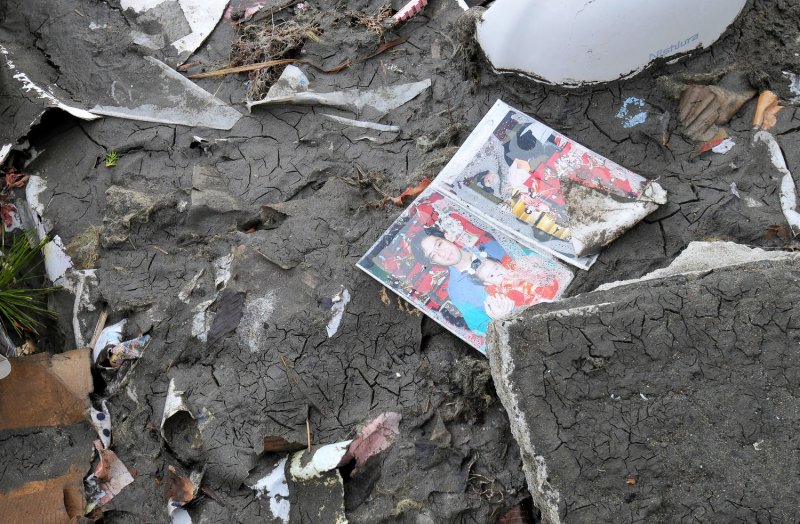1 of 2 | Destruction is seen in the wake of last week's 8.9 magnitude earthquake and tsunami in Ofunato, Iwate prefecture, Japan, on March 17, 2011. UPI/Keizo Mori |
License Photo
TOKYO, March 21 (UPI) -- Smoke rising from Japan's quake-hit Fukushima nuclear plant interrupted vital recovery work Monday, the plant operator said.
Tokyo Electric Power Co. and the government told the Kyodo news agency efforts to revive power systems at reactors Nos. 2 and 3 and to spray cooling water onto spent fuel pools should resume Tuesday after observation of the site.
TEPCO said it pulled workers out after gray and black smoke was seen over a pool at the No. 3 building. No explosion was heard.
The smoke stopped after two hours, but TEPCO then found white smoke or steam rising from a crack in the roof of the No. 2 building.
Meanwhile Monday, the government told Fukushima and three other prefectures to suspend shipments of spinach and another leaf vegetable, kalina, after radioactive substances were found in the produce. Trace amounts of radioactive substances also were detected in drinking water in nine prefectures, but not at unsafe levels.
The government's disaster agency also asked Fukushima to stop shipping raw milk. And authorities are beginning tests on fish.
Ever since the disaster struck the six-reactor plant, No. 3 has been a source of major concern because of the danger of release of highly toxic plutonium. The reactor lost its cooling function and its core is believed to have partially melted. Its roof and upper walls were blown away or knocked down by an explosion last week.
Groundwater spraying has continued to keep its spent nuclear fuel pool cool.
Kyodo reported no change in pressure inside the containment vessel of the No. 3 reactor following the smoke incident Monday.
The work involved laying power cables to restore electricity at the No. 2 and No. 5 reactors' control rooms so radiation can be monitored and also to cool down the storage pool at No. 2 to prevent further radiation releases.
The Nuclear and Industrial Safety Agency said the No. 2 containment vessel's pressure-suppression chamber has been damaged and the process might take some days as replacement parts are needed.
Although monumental efforts in the face of ever-present meltdown threat and radiation catastrophe from throughout the facility have shown some progress, there were reports of higher levels of radiation contamination in some food items.
Ground spraying of water continued to keep the fuel pools cool at the No. 4 reactor. While this reactor, along with Nos. 5 and 6, was not operating at the time of the May 11 disaster, some of No. 4's fuel was not in the reactor core but in a spent-fuel pool without a cooling function, Kyodo reported. The reactor's roof also was blown away in last week's explosion.
Reactors 5 and 6 were now reported to be in a stable, "cold shutdown" state.
The government Monday also planned to engage tanks of the Self-Defense Forces to clear quake-created building rubble near the reactors. Use of trucks for the job has not been possible because of the high-level of radiation at those locations.
The cooling functions in the first three of the six reactors failed apparently after being flooded by the tsunami that came on the heels of the 9-magnitude earthquake, Japan's worst. Their reactor cores are believed to have partially melted.
There were also reports that regardless of any progress the entire Fukushima plant may be shut down once the crisis ends because its structure and reactors reportedly have suffered serious damage.
Lawmakers from the Democratic Party of Japan-led ruling coalition warned trillions of yen would be needed in supplementary spending for reconstruction efforts, Kyodo reported. One trillion yen is about $12.3 billion.
The new fiscal year begins April 1 and the government is already under considerable pressure to bring about economic recovery and boost exports.















